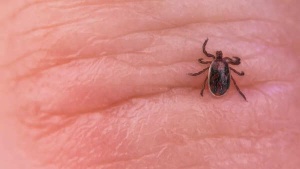After a period of relative quiet, COVID-19 is once again on the rise globally. While the new Nimbus variant is currently under observation and generally causes mild illness, a particularly unpleasant symptom is emerging: severe throat pain, often described as "Razor Blade throat." Patients report a sharp, intense pain that makes swallowing feel like a formidable challenge. What exactly is this symptom, and why is it so painful?

The term "razor blade" sore throat vividly illustrates the excruciating throat pain associated with the Nimbus variant. Unlike milder sore throats experienced with earlier COVID strains, this symptom is characterized by its extreme sharpness and intensity. Many individuals find swallowing even water to be a painful ordeal. This symptom was initially observed in China following the emergence of the variant in May 2025 and has since spread to the U.S. and other nations. Currently, Nimbus accounts for approximately one-third of COVID-19 cases in the U.S.
COVID-19 primarily targets the respiratory system, entering the body through the nose, mouth, and throat – all components of the upper respiratory tract. In the initial stages of infection, the virus replicates within the throat lining, triggering the body's immune response. This leads to inflammation and swelling of the throat tissues.
With the Nimbus variant, this immune reaction appears to be particularly strong or localized in the throat region. Experts suggest several potential contributing factors:

Sore throats can arise from various causes, including the common cold, flu, allergies, acid reflux, or bacterial infections like strep throat. The defining characteristic of the COVID-19 "razor blade" sore throat is the extreme sharpness and severity of the pain, though this symptom is not exclusive to COVID-19.
Medical professionals caution that the overlap in symptoms with other illnesses can make it challenging to determine whether a sore throat is caused by COVID-19 or another ailment. If the pain is intense or persists for more than a few days, it is crucial to get tested for COVID-19. Even if the test result is negative, consulting a doctor is advised to determine if antibiotics are necessary to address any underlying infection.
Besides the characteristic severe sore throat, Nimbus presents symptoms similar to those observed with other COVID-19 variants:
Some individuals might also experience swollen lymph nodes or difficulty swallowing due to throat inflammation.
Despite the intensity of the pain, several home remedies can provide relief:
If your sore throat worsens, persists for more than a week, or is accompanied by difficulty breathing or swallowing, seek immediate medical attention.
Sources:
WebMD, “Why COVID 'Razor Blade' Sore Throat Hurts So Bad,” June 26, 2025
Everyday Health, “How to Cope With a COVID-19 Sore Throat,” June 23, 2025
Healthline, “New COVID Variant Nimbus May Cause Painful ‘Razor Blade Throat’ Symptom,” June 19, 2025
Newer articles
Older articles
 Vijay Officially Named TVK's Chief Minister Hopeful for Tamil Nadu's 2026 Election
Vijay Officially Named TVK's Chief Minister Hopeful for Tamil Nadu's 2026 Election
 RJ Mahvash Prioritizes Work Over Buzz, Addresses Link-Up Speculation
RJ Mahvash Prioritizes Work Over Buzz, Addresses Link-Up Speculation
 UNESCO's World Heritage Wonders: Unveiling 10 Iconic Sites, From Petra to the Pyramids
UNESCO's World Heritage Wonders: Unveiling 10 Iconic Sites, From Petra to the Pyramids
 JPG to PDF: A Comprehensive Guide for Graphic Designers & Professionals
JPG to PDF: A Comprehensive Guide for Graphic Designers & Professionals
 iQoo Z9 Turbo: Rumored Specs Emerge – Snapdragon 8s Gen 3, 6000mAh Battery Highlighted
iQoo Z9 Turbo: Rumored Specs Emerge – Snapdragon 8s Gen 3, 6000mAh Battery Highlighted
 Shadman Islam Defends Bangladesh Batters After Day 1 Struggles Against Sri Lanka
Shadman Islam Defends Bangladesh Batters After Day 1 Struggles Against Sri Lanka
 England's Bold Claim: Could They Have Chased Down 450 Against India?
England's Bold Claim: Could They Have Chased Down 450 Against India?
 5 Often-Missed Warning Signs of Bladder Cancer You Need to Know
5 Often-Missed Warning Signs of Bladder Cancer You Need to Know
 KL Rahul Puts Country First, Prioritizes England Tests Over Newborn Child
KL Rahul Puts Country First, Prioritizes England Tests Over Newborn Child
 Tick Bite Paralyzes Fitness Influencer: A Wake-Up Call for Outdoor Enthusiasts
Tick Bite Paralyzes Fitness Influencer: A Wake-Up Call for Outdoor Enthusiasts